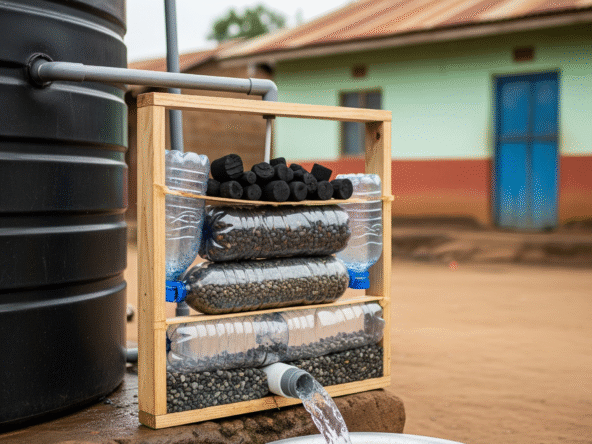As climate patterns shift and rainfall becomes more intense across Kenya, flooding is now a regular threat in regions such as Nairobi, Kisumu, and many low-lying parts of the Rift Valley. For homeowners, farmers, and real estate developers who rely on water storage tanks for domestic use, irrigation, or resale, floods pose a direct risk to water quality, infrastructure, and long-term utility.
This article outlines practical ways to flood-proof your water storage system whether using plastic tanks, steel reservoirs, or underground options while improving your overall drainage and tank security in the process.
1. Why Flood-Proof Water Tanks?
In flood-prone regions, tanks that are poorly anchored or installed directly on the ground are at high risk of:
- Floating or tipping due to rising water levels
- Structural failure from shifting soils or undercut foundations
- Contamination from floodwater runoff entering the tank
- Pump malfunction due to water ingress or electrical issues
These risks increase when tanks are located in poorly drained areas or installed without consideration for slope and overflow handling.
If you’re installing tanks in heavy clay or unstable soils, refer to How to Build Low-Cost Septic Tanks in Black Cotton Soils many of the same principles apply to water tanks.
2. Elevate Your Tank Safely Above Flood Levels
The most effective way to protect your tank from flood damage is by elevating it above the highest known flood line. Options include:
- Reinforced concrete platforms at least 30–60 cm above ground level
- Steel water tank stands built to at least 1.5–2 meters in height
- Compacted gravel or murram base ringed with a stone or concrete barrier
On sloped sites, design your elevation and access carefully—see Building on Sloped Plots in Kenya for tips on creating stable foundations and managing runoff.
3. Secure the Tank with Anchors and Enclosures
Even elevated tanks need to be secured against strong winds and floating pressure from beneath. Secure your system using:
- Steel straps or ground anchors for plastic tanks
- Lockable enclosures using timber, brick, or steel mesh to prevent tampering
- Concrete edge curbs around the base to reduce lateral movement during water surges
For guidance on safe enclosures and protection, see Tank Shelters and Lockable Enclosures in Kenya.
4. Choose Flood-Resistant Tank Types
If you live in a location with high flood risk, not all tanks will perform equally. Here’s a breakdown of the best types for different conditions:
| Tank Type | Performance in Floods | Considerations |
|---|---|---|
| Concrete tanks | Extremely stable and durable | High installation cost, permanent setup |
| Underground tanks | Immune to surface flooding if sealed | Requires proper waterproofing and access |
| Steel tanks | Heavy, stable under water pressure | May corrode without protective coating |
| Plastic tanks | Lightweight and float-prone if unanchored | Affordable but must be raised or strapped |
For a full review of brands and materials, visit Top Water Tank Brands in Kenya.
5. Integrate with a Smart Drainage and Overflow Layout
Flood resistance is not only about the tank your entire drainage plan must be flood-aware. Key design elements include:
- Overflow pipes directed to soak pits or stormwater drains
- Perimeter swales or French drains to divert runoff away from the tank base
- Gutter guards and debris filters to keep roof-harvested water clean
- Proper landscaping that slopes away from the tank and foundation
For step-by-step design of soak pits, see Soak Pit Design for Residential Plots
If you’re combining fencing with drainage, also consider Perimeter Wall Materials in Kenya to choose materials that don’t block natural runoff.
6. Add Float-Controlled Automation and Pressure Systems
During floods, power interruptions and debris can affect how your pump or system behaves. Mitigate this by:
- Installing float switches to shut off the pump when tanks are full or empty
- Using pressure tanks to maintain consistent water pressure when the pump is off
- Installing non-return valves to prevent backflow of dirty water
Get the full setup guide at Tank Refill Automation Using Float Switches
Flood-proofing your water storage system is a practical investment not just for rural farms, but also for peri-urban households and landlords in flood-prone zones. By raising tanks, securing them with anchors, and designing with drainage in mind, you protect both your water quality and your infrastructure.
As climate patterns become more unpredictable, your flood resilience will increasingly define the reliability of your water supply.


